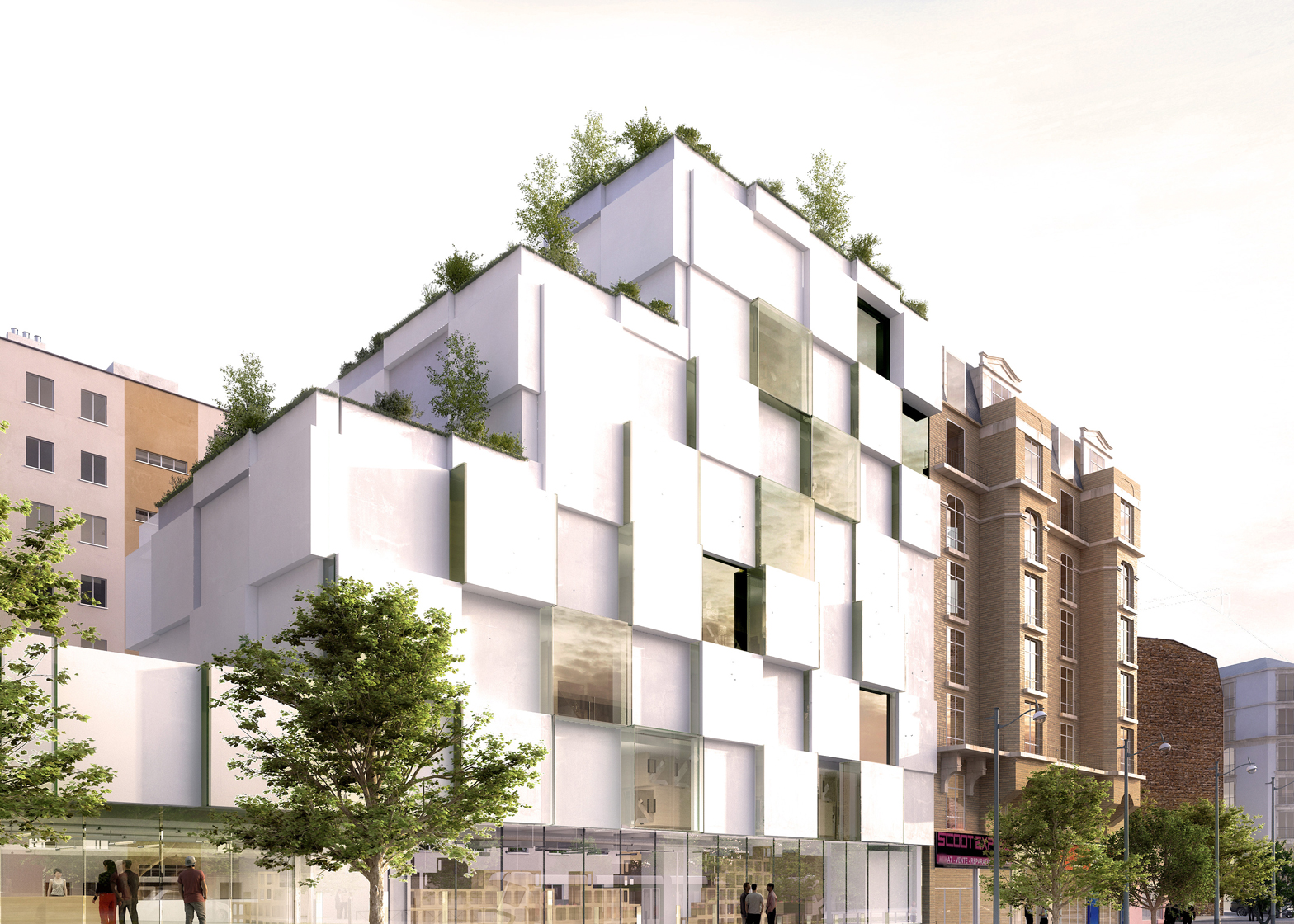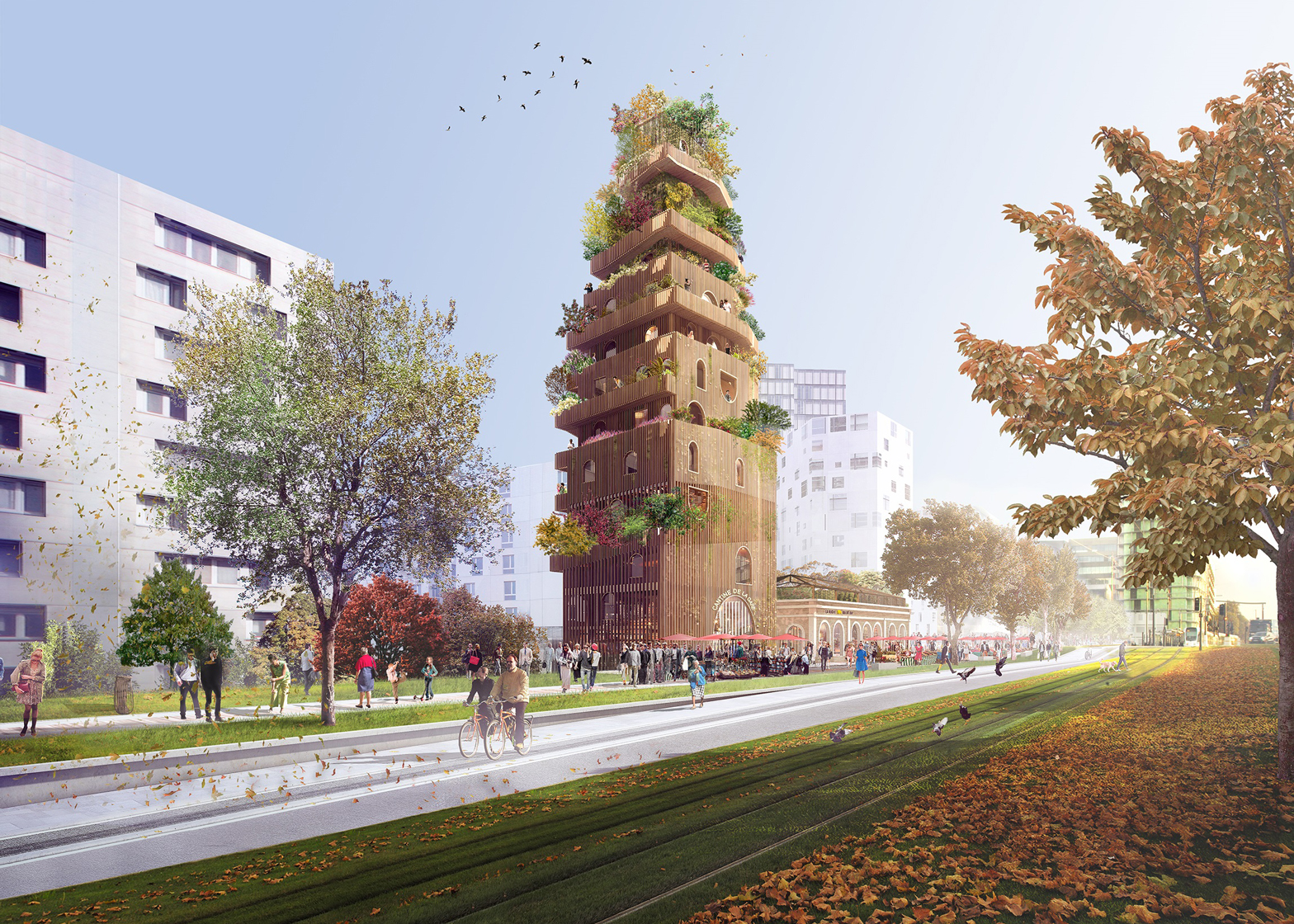In late 2014, the Reinventing Paris design competition was launched, and this week the 23 winning projects were announced.
The competition invited some of the world’s top architects to submit environmentally friendly urban designs for the French capital. Design firms teamed up to redevelop specific areas of the city, from old bath houses to defunct subway stations, and they incorporated green spaces, like rooftop gardens or terraces, into their work.
“We are launching this call for innovative urban projects in order to prefigure what the Paris of tomorrow might be,” Anne Hidalgo, the mayor of Paris, said in a statement. “Each team is invited to present its ideas on how to bring added vitality to exceptional Parisian sites. The winners will then be able to purchase or rent the terrains in order to carry out their projects while simultaneously conducting an urban experiment on an unparalleled scale.”
Both Dezeen and The Guardian highlighted some of the more innovative projects. All winners can be seen here.
 NOC42. Photo: AR Architecture, via Dezeen
NOC42. Photo: AR Architecture, via Dezeen
 Realimenter Massena. Photo: DGT Architects, via Dezeen
Realimenter Massena. Photo: DGT Architects, via Dezeen
 In Vivo. Photo: Xtu Architectes, via Dezeen
In Vivo. Photo: Xtu Architectes, via Dezeen
Related Stories
Architects | Mar 7, 2018
New National Building Museum exhibit explores the architecture of the Manhattan Project
The exhibit will run through March 3, 2019.
Urban Planning | Feb 26, 2018
A new way to approach community involvement for brownfield projects
A new community engagement program works with young adults to help the future of the neighborhood and get others involved.
Urban Planning | Feb 23, 2018
Paris car ban along the river Seine deemed illegal
Mayor Anne Hidalgo has appealed the decision.
Urban Planning | Feb 21, 2018
Leading communities in the Second Machine Age
What exactly is the Second Machine Age? The name refers to a book by MIT researchers Erik Brynjolfsson and Andrew McAfee.
Urban Planning | Feb 14, 2018
6 urban design trends to watch in 2018
2017 saw the continuation of the evolution of expectations on the part of consumers, developers, office workers, and cities.
Urban Planning | Feb 12, 2018
Stormwater as an asset on urban campuses
While there is no single silver bullet to reverse the effects of climate change, designers can help to plan ahead for handling more water in our cities by working with private and public land-holders who promote more sustainable design and development.
Urban Planning | Jan 24, 2018
Vision Zero comes to Austin: An outside perspective
Aside from the roads being wider and the lack of infrastructure for bikes and pedestrians, there seemed to be some deeper unpredictability in the movement of people, vehicles, bikes, and buses.
Urban Planning | Jan 10, 2018
Keys to the city: Urban planning and our climate future
Corporate interests large and small are already focused on what the impact of climate change means to their business.
Urban Planning | Jan 2, 2018
The ethics of urbanization
While we focus on designing organized and supportive architecture, much of urbanization is created through informal settlements.
Urban Planning | Dec 5, 2017
A call for urban intensification
Rather than focus on urban “densification" perhaps we should consider urban “intensification.”

















